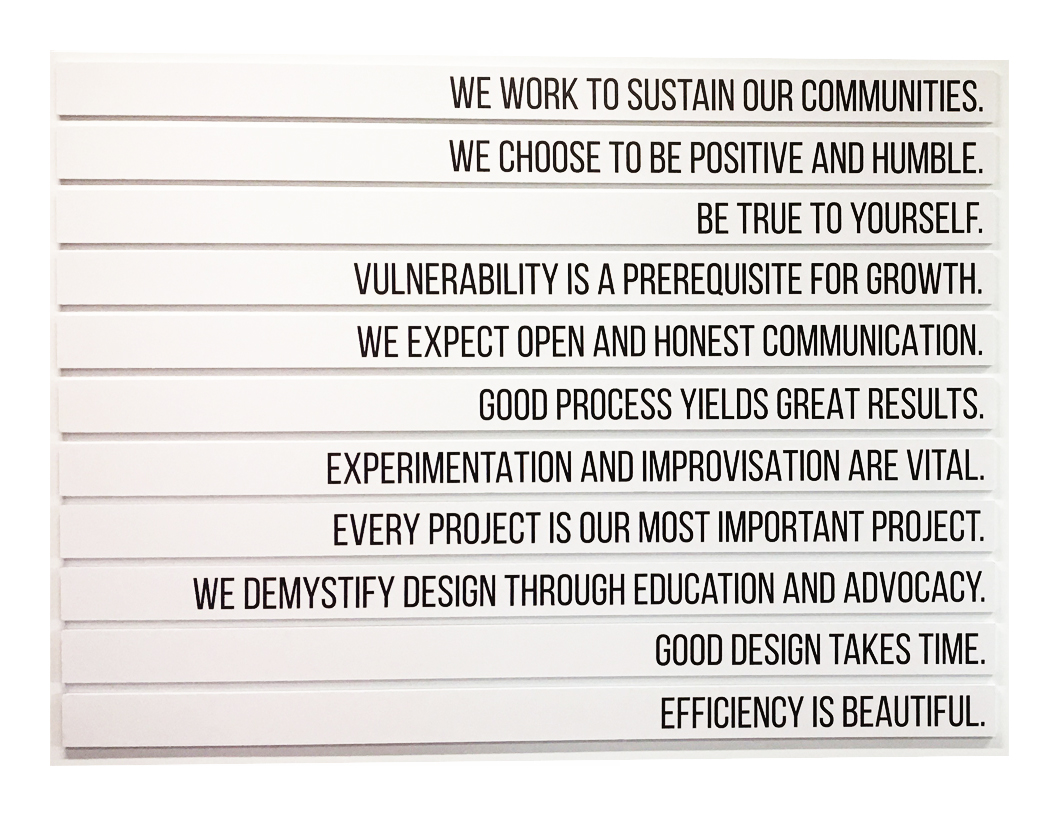How is it going to help me achieve my goals?
We will assume for the sake of this article, that you’ve already established, as a part of a larger business development strategy, that getting your work published is something you actively want to do. You already understand the value and simply want to go ahead with it.
While you could be a Generic Gerald - more on that later - and start pitching your projects to publications right away, it’s a good idea to sit down and think about your business objectives and how getting published with help you achieve those.
Strategy, strategy, strategy.
This is where strategic planning comes in. You will want to identify your business objectives and where you would like to grow. For example, if you have a residential practice and get plenty of good residential work, but you would like to grow your institutional portfolio, it may make sense to emphasize the institutional work and try to get published in that area, even though you’ll still want to get your best residential work out there to maintain that side of your practice.
This is where the projects to be promoted are discussed and you can start to form an idea of how you’re going to go about this. We are looking at long term goals, so really try to think about your practice in 5 or 10 years. Whether that vision may change or not, does not matter at this point.
Based on these business objectives, you can put together a list of completed projects in order of priority. This will form the basis of your publishing endeavour.
Did I say anything about strategy?
This is where you need to be bold and brave with your goals. The more off-beat and unexpected, the more likely you are to attract attention. It can be a scary proposition, but it’s a necessary one. This is where you have an opportunity to shine and express an opinion, something unique to yourself, that represents you and your company.
Being bold is a valid strategy. Heck, in my opinion, it’s the only way to consistently attract attention. The most successful architectural practices are the ones that find a way to stand out. That doesn’t mean that they mindlessly jump around like an over-excited child high on sugar. It’s more about speaking to the audience’s interests and desires and that may look very different for each practice.
Choosing the right hook.
Now that you have a strategy and know which projects you want to promote, it’s time to find the right hook, a.k.a. the angle of your story. You will want to tap into what makes your company unique. If you already know this and have an established company culture and set of values, this should be pretty straightforward. If this is not clear, you may want to spend some time figuring that out.
Then, onto the project. What is unique about it? It is a great space? Does it reflect the personality of the users? Is it particularly well suited for a specific use? Does it have a unique story? You want to reflect on the project and really nail down what its unique attributes are. Many publications, though not all, are interested in the way the space is lived in and will want to have access to users on the record as part of the story they will write. Not only it’s a good idea to include that in your pitch, but you may want to go a step further and prep your clients by letting them know that you want to get published and get their consent to be contacted by the media should they bite, as getting the users on record is a very common condition for publications, and a deal breaker if they can’t.
Picking the publications that fit with your strategy and angle.
Most editors like to be fed with stories that not only fit their editorial stance (that’s where you need to do your research and find out more about them) but also are compelling enough and well put together so that they can determine right away if that’s a possible fit before they spend any more time on your submission. I’ve heard first hand from editors that they get hundreds if not thousands of submissions and helping them sift through them quicker is very valuable to them and will give you brownie points with regards to increasing your chances of getting published.
If you’ve managed to get past the first line of defense, a succinct, yet thoughtful and most importantly, well put together submission will also play in your favour. Magazines get many submissions following the traditional press release format, which tends to focus on the project itself and the designer, generally following this formula: “Our project is awesome + we’re awesome, so please publish us”. Don’t be a Generic Gerald and do what everybody else is doing. The biggest missed opportunities when submitting projects for publication is when firms fail to speak more in-depth to their projects and how they function, enabling their users to live better lives and instead focus on the aesthetics.
How to be a winner
Being published is never guaranteed, as we will always be subjects to the unfathomable whims of editors and journalists. However, if you thoughtfully spend the time to strategize, come up with a catchy hook and be deliberate about the publications you choose to target, you will likely start seeing publications pick-up your stories more and more.
Keep in mind that this is a long game, and the more you can establish trusting relationships with media outlets, the less resistance you will find on your path to greatness and lack of success early on should not deter you from continuing as you will get better at it over time. Publications will start recognizing your name and give your submissions more attention. Like real life relationships, this takes effort to create and maintain.
Once you’ve submitted your project, the work doesn’t stop here. As everybody else is, editors and journalists are busy people. While it’s a common excuse around these parts to not give someone the time of day, we have to put ourselves in their shoes for a minute and imagine how many hundreds of submissions they have to go through for each and every issue. Sometimes, an otherwise perfectly suited submission will slip through the cracks just because.
Instead of giving up by assuming that since no one responded to your submission, they’re not interested, it is critical to pick up the phone and call that editor (easier to do if a pre-existing relationship exists) or even just send a follow-up email asking for an answer and/or feedback. It is not rare for a follow-up to lead to a yes, so this is low-cost, near effortless opportunity to increase your chances of being published. And don’t forget to ask for feedback on why they didn’t see a fit anytime you get a chance, it will help you improve both the quality of your submissions and strategically target them to the right media.
When it comes to doing this type of work, my personal mantra is “I’m not giving up until they either say, yes, no or tell me they never want to talk to me again”. If you behave like a polite, civilized human, the latter will be very rare. Most people value persistence so don’t be afraid to follow-up multiple times.
This traditional way of getting published, is still effective, albeit very time-consuming. I believe it is worth investing into if you can afford it, as paper-based publications are still very much alive and carry a lot more weight in terms of brand image. Telling someone you’ve been published in Architectural Record is way more prestigious than telling them you’ve been published on ArchDaily and for a good reason. Online publications have a place in your marketing efforts and for different reasons, but that’s for another article.










